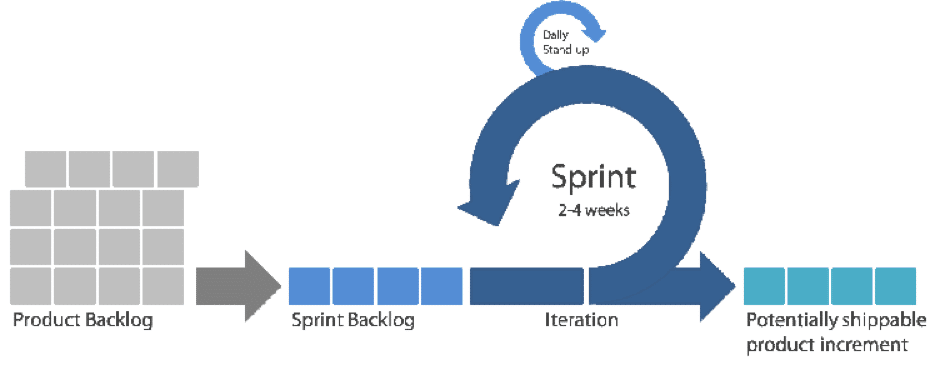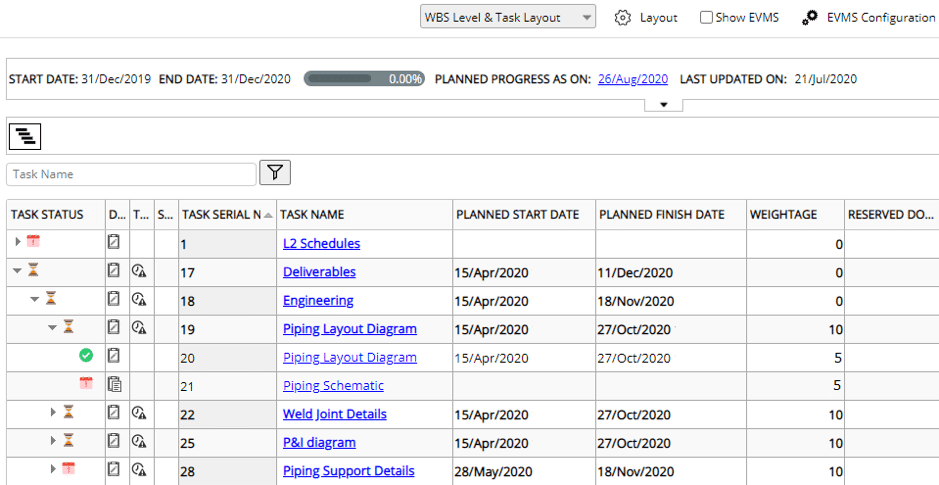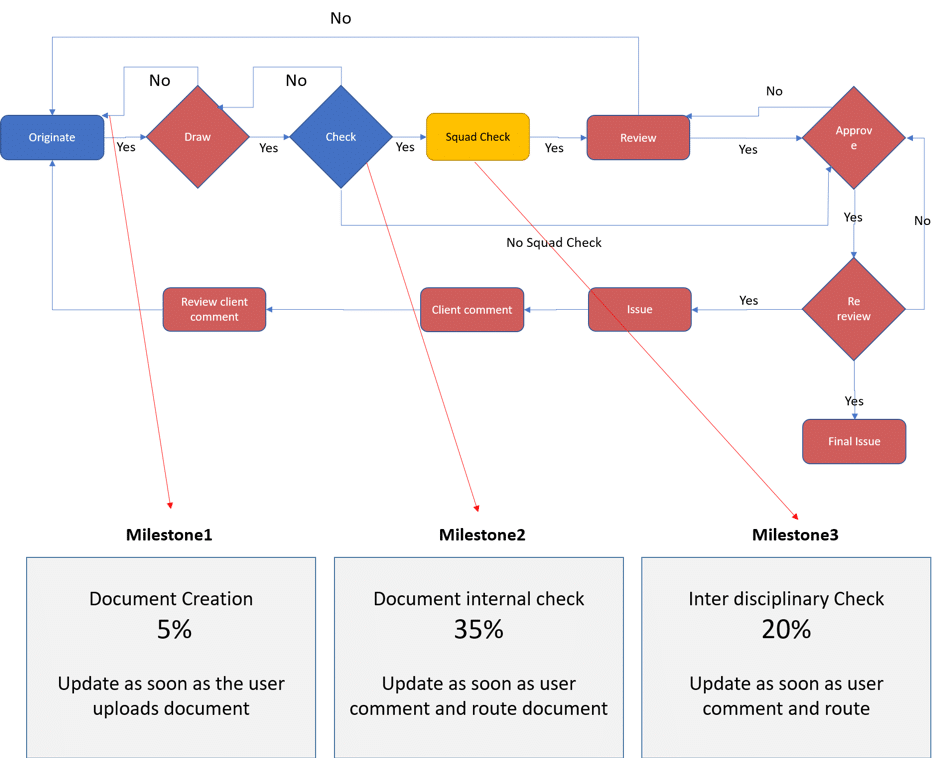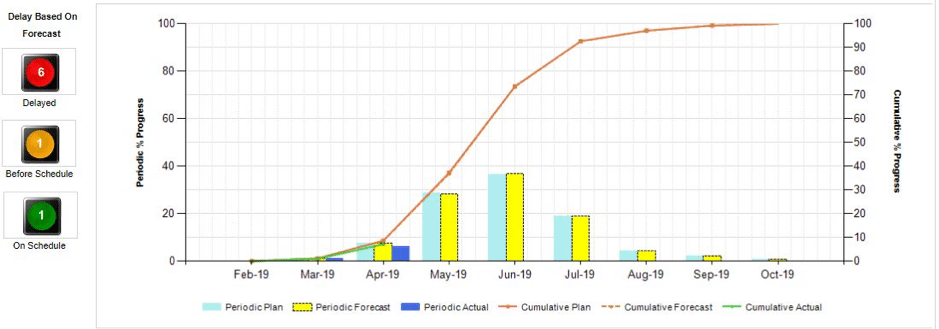- Blog
- 13 Sep 2020
Implementing Agile Project Management in Engineering Projects

A quick look at the Top 3 global project management trends
- A project’s success criteria is being determined by ROI and ROCE rather than the traditional three-factor approach of Time, Cost and Scope.
- Projects are getting executed through distributed teams who collaborate with each other over cloud-based platforms, and perform concurrent development.
- Project planning is getting decentralized and adapting best practices from all methods of project management (traditional, agile) rather than just one method.
The pandemic is acting like a catalyst, and speeding up the adoption of distributed teams working from remote locations and collaborating with each other over cloud-based platforms performing concurrent development. Based on the industry reports, it seems likely that going forward, this is probably how we will work hereafter. The traditional command and control methods are giving way to principle-based management, and driving collaboration, trust, openness, and transparency, which in turn is paving the way for the adoption of Agile Project Management (APM) into Engineering projects.
Why Agile
Of all the available agile frameworks, the SCRUM framework is the most popular because of its simplicity and adaptability to other engineering domains, going beyond the software development process for which it was originally intended.
The SCRUM framework comprises of a set of activities or ‘ceremonies’ like;
- Sprint-planning meeting
- Sprinting
- Daily scrum meeting
- Sprint review
- Sprint retrospective
These ceremonies collectively create the environment required for remote team members to self-organize and collaborate, in order to deliver high quality deliverables with predictability and consistency.
For Engineering teams who are new to Scrum, here is a quick translation of the above ceremonies into project stages:
- Preparation
- Planning (Sprint planning)
- Execution (Sprinting)
- Monitoring & Control (Daily scrum meeting, Sprint review)
- Closing (Sprint retrospective)
Preparation
During the preparation phase, the project manager along with his team will:
- Define the Engineering Work Packages (EWP)
- Provide weightages to the EWPs based on the effort involved to complete them
- Prioritize the EWPs based on their urgency and importance
- Create a project roadmap comprising of major milestones, at 30 day intervals
- Distribute the EWPs across the milestones

Planning (Sprint planning)
During the planning meeting, the project manager along with the team will discuss and agree on the EWPs they will be delivering within the next 30 days. The main activities performed during the planning meeting are:
- Refine estimates the EWPs scheduled within the sprint by allocating points based on the amount of work involved
- Decompose the EWPs into deliverables
- Identify the activities with process flow for different deliverable types
- Allocate Budgets
- Define weightages for progress measurement for each activity
- Define schedules for key activities
- Identify resource requirements based on roles
- Commit on deliverables and their schedule (Sprint Goals)

Execution (Sprinting)
During execution the main activities performed are:
- The team performs the work based on the look ahead plan
- Each team member performs their tasks based on the task list
- Actual efforts are captured
- The team works together collaboratively to achieve the goals
- Comments for resolution are identified with responsibilities
Monitoring & Controlling
Scrum keeps everything visible to every stakeholder associated with the project, during every phase of the project. This is accomplished with:
- Real time reporting of status and progress (transparency)
- Daily meetings (daily scrum)
- Burn down charts
- Earned value charts
- Variance analysis
- Reforecasting based on the catch-up plan
- Milestone reviews (Sprint reviews)

Closing
Upon completion of the milestone date (Sprint), retrospective meetings are conducted with the help of audit trails, and the learnings are incorporated into the subsequent sprint planning leading to the next sprint milestone. Reforecasting of the balance milestones and the associated EWPs are done.
Conclusion
As project teams across the world embrace remote working, it is clear that the Scrum framework provides an easy-to-understand and scalable method for working effectively based on trust, transparency, openness and collaboration.
Engineering teams who adopted Scrum to deliver their projects have reported the following benefits:
- Increased communication
- Better transparency
- Clarity of tasks to be performed
- Better inter-team relationship
- Faster collaborative problem-solving
- Unified ways of working
- Increased accountability of tasks
The best approach for scrum adoption would be a bottom up approach. Implement it in one project, or in a significant part of one project, and then scale it up.
Expert in agile, predictive and hybrid project management. Researches on the application of Artificial Intelligence for better project outcomes. Works as a domain expert at Wrench Academy, the knowledge management division of Wrench Solutions, the makers of Smart Project Digital PMO.
Related Posts

The Difference Between Monitoring and Control in Project Management
When EPC projects fail, there are a number of factors that contributed to that failure, and when companies attempt a post mortem, various inefficiencies in project management tend to crop up as the cause. However,…
- 06 Feb 2025

Selecting and Implementing an EPCM System
Companies that decide to invest in an EPCM (engineering procurement construction management) system do so for various reasons, like better risk management for the project owners/clients, enhanced project turnaround speed and time flexibility (where some…
- 16 Jan 2025
Archives
- February 2025
- January 2025
- November 2024
- October 2024
- September 2024
- August 2024
- July 2024
- June 2024
- May 2024
- April 2024
- March 2024
- January 2024
- December 2023
- November 2023
- September 2023
- August 2023
- July 2023
- June 2023
- May 2023
- April 2023
- March 2023
- February 2023
- January 2023
- December 2022
- November 2022
- September 2022
- June 2022
- May 2022
- April 2022
- March 2022
- January 2022
- November 2021
- October 2021
- July 2021
- June 2021
- May 2021
- March 2021
- February 2021
- January 2021
- December 2020
- November 2020
- September 2020
- August 2020
- June 2020
- April 2020
- March 2020
- February 2020
- January 2020
- November 2019
- October 2019
- September 2019
- August 2019
- April 2019
- March 2019
- December 2018
- October 2018
- September 2018
- August 2018
- July 2018
- June 2018
- May 2018
- April 2018
- January 2018
- November 2017
- October 2017
- September 2017
- May 2017
- April 2017
- March 2017
- February 2017
- January 2017
